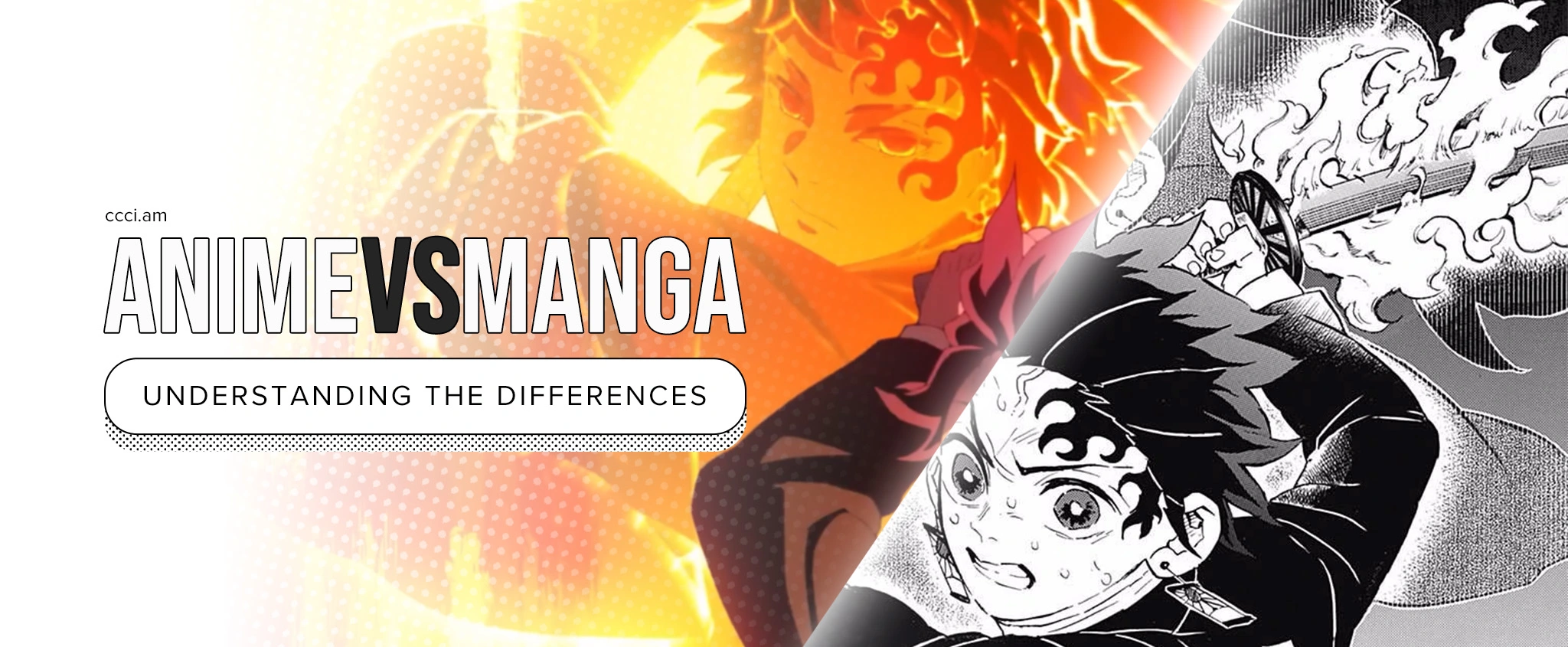The Manga Industry Growth in 2022: Sales Skyrocketing
Key takeaways
- The manga industry growth is inevitable, and with it comes the need for more professional manga services.
- The manga sales skyrocketing demands for more content and higher quality stories.
- The All Japan Magazine and Book Publisher’s and Editor’s Association (AJPEA) reported in 2020 that the manga industry earned 23% more than in 2019.
- Professional manga coloring and verticalization will become more prevalent to meet the demands of the industry.
- Multilingual manga translation and typesetting from professional manga services providers play a significant role in the manga industry.
- The future of the manga industry is looking very bright, and publishers and creators must be prepared to keep up with the industry’s growth.
Table of contents:
- The Manga Industry
- Manga Market Growing in 2022
- Skyrocketing Numbers for the Manga Industry
- The Future of Manga
- CCCI – Multilingual Manga Translation and Typesetting Services
The world heard about Jujutsu Kaisen as 2021’s best-selling manga series. Demon Slayer followed, and Tokyo Revengers completed the top three. The manga industry growth blew our minds in 2021, and we thought it would be the best year for manga. But no, we’re in the second half of 2022, and the industry is growing even more!
More manga enthusiasts are born every day, whether they’re old fans who are getting back into it or new readers who are just picking it up for the first time. As a result, manga sales have been skyrocketing, and it doesn’t seem like they will slow down anytime soon. Do you know what else is skyrocketing? The demands for professional manga services.
Let us take a look back into the history of the manga industry and see how it has changed and grown over the years. And with the current numbers, let’s try to predict where it might go in the future.
The Manga Industry
Manga has been around for centuries, with the earliest known manga dating back to the 12th century. The word “manga” itself comes from the Japanese 漫画, which can be read as “man-ga” or “manga.” On the one hand, the first kanji 漫 can mean “entertaining” or “involuntary.” It can also mean “to exaggerate. On the other hand, the second kanji 画 “drawing” or “painting.” When put together, 漫画 can be read as “whimsical pictures” or “caricature.”
It was in the 18th century when people started using the term “manga.” The famous Hokusai Manga books were considered the origin of the manga. And in 1902, Rakuten Kitazawa, a Japanese manga artist, published the first modern manga, inspiring many other manga artists across the country. Manga production took off for good in 1947. And by 1950 and 1960, manga took over Japan.
Eventually, manga also reached other countries like the United States of America and Latin America. The manga industry growth and development called for publishers to translate and release manga outside of Japan. As expected, the localization quickly increased the number of manga fans globally. Many manga titles have been adapted into anime, live-action movies, and video games.
Manga Market Growing in 2022
The All Japan Magazine and Book Publisher’s and Editor’s Association (AJPEA) reported in 2020 that the manga industry earned about US$5.77 billion (612.6 billion yen). That was 23% higher than the previous year! The sector earned 498.0 billion yen in 2019. The 2020 record was the highest since 1978 when the AJPEA started tracking the industry. Before 2020, the highest record was in 1995, when the industry reached 586.4 billion yen. These points show that the industry peaked in the ’90s and is only now getting to that level again.
The significant record also involves the print manga market. The industry rose since 2014, reaching about US$2.55 billion (270.6 billion yen). It was a 13.4% increase from 2019 when the industry earned 238.7 billion yen. The digital sales of manga also rose to about US$3.22 billion (342.0 billion yen), which was 31.9% higher than 2019’s 259.3 billion yen.
There was a boom in the sales of Demon Slayer: Kimetsu no Yaiba and other titles. Since 2020 also faced COVID-19 fatigue, people have turned to manga and other forms of escapism. The industry felt the effects as people were buying more manga than before.
Overall, the manga market’s expansion has been happening since 2018. Though 2020 surpassed 2019, it was in 2019 when digital sales surpassed print sales. And did the industry stop there? No. In 2021, ICv2 reported manga sales in the US. The manga sales more than doubled from the previous year. There was a 160% increase, totaling 24.4 million sold manga units.
Pro Tip
Pro Tip
To succeed in the digital manga market, creators and publishers should consider professional manga coloring and verticalization. The keyword is “professional.” The market is now more digitized than ever, so accessing content is easier, but it’ll work best when professionals are behind it.
It’s safe to say that the manga industry is growing nonstop. According to Comicbook, manga sales are booming stateside, with more people looking for new titles to read. The growth can be attributed to the rise of digital reading, social media, and streaming services. The latter two help with the discovery of new titles.
Skyrocketing Numbers for the Manga Industry
The increased demand for manga services comes along with the nonstop growth of the manga industry . The need for professional manga coloring, letterers, and editors also grew. More publishers rely on these services to help create a captivating story. The industry is also benefiting from the recent manga trend called “verticalization.”
Digital platforms offer single issues and chapters for a price or for free. The digital trend is slowly getting more popular, not just because of the COVID-19 pandemic. The younger generation is more comfortable with reading on digital devices. The switch to digital reading is inevitable, and the manga industry is slowly adapting.
More people are now reading manga online through websites and apps. Similar to the webtoon format, verticalized manga is read from top to bottom. The panels are also larger, which is more reader-friendly for mobile users. Verticalization requires less zooming and panning, which is a big plus for mobile readers.
Note: Webtoons are initially from South Korea, and they’ve been increasing in popularity since the early 2000s. Many Western publishers now use the format, and many titles have been adapted into K-Dramas.
Apart from verticalization, manga coloring is another service that’s in demand. Manga is traditionally black and white, but some publishers are experimenting with color. The addition of color can help with the immersion and emotional impact of the story.
Of course, the need for translations and localizations will also grow. The global interest in manga is at an all-time high, and more people are looking for titles that are not in their native language. The demand for manga services is evident and will only grow in the next few years. The manga sales skyrocketing only means good things for the future of manga services.
Pro Tip
Pro Tip
When you decide to have your manga translated, verticalized, localized, or colored, it’s crucial to work with professionals. The quality of your story is at stake, so make sure you work with the best in the industry! The goal is to let your readers fully immerse themselves in your story, and you can only achieve that with the help of experts.
The Future of Manga
Where are we going with the manga industry? The industry is expected to grow even more in the next few years. The global interest in Japanese manga is at an all-time high, and there’s no sign of slowing down. According to Comicbook, the industry’s explosive growth isn’t going anywhere. Mark DeVera, director of marketing and sales at Yen Press, also noted:
“One of my favorite developments in the last year has been seeing previously under-represented types of manga really start to shine. There has been a significant resurgence in interest in Shojo and BL titles, for example. I predict we’ll continue to see more and more categories find their fans and audiences in our territory.”
Manga has already reached France, Germany, Thailand, and the Arab world. The recent surge in digital reading will only help the industry grow. The future of manga is looking bright, and CCCI is here to provide you with all your manga needs!
CCCI – Multilingual Manga Translation and Typesetting Services
CCCI knows all the challenges of manga translation. Like you, we look up to the best manga translations of all time! We’ve also watched many manga-to-anime adaptations, keeping up with the latest manga and anime releases. We understand your struggles when you can’t find a good translation of your favorite title. The sense of loss is all too real!
CCCI has a team of professional translators, editors, and typesetters who are experts in the field of manga localization. We’ve been in the business for over ten years, and we’re proud to provide services that keep up with the industry’s growth. Verticalization and coloring? No problem! Our high-quality services help you reach a wider audience.
Manga is not going anywhere, so don’t miss out on this opportunity to have your story read by people worldwide! We’re here to help you keep the manga industry growth going. Get in touch with us now!






